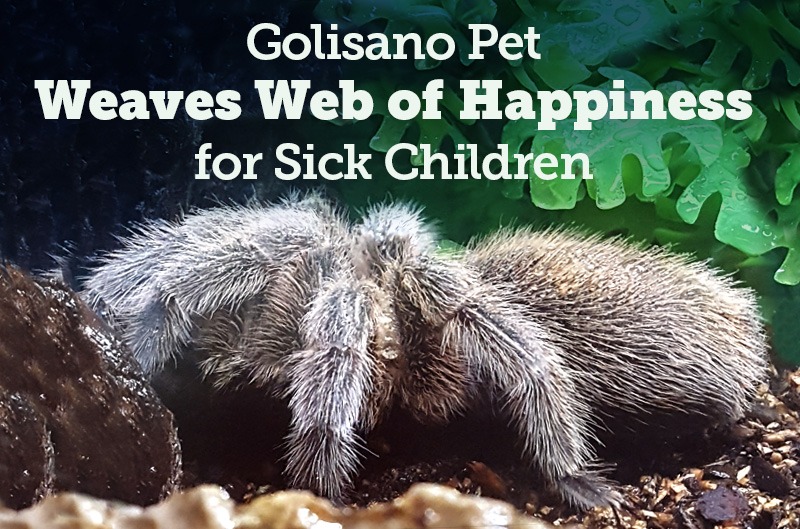
Tara stepped slowly, moving from under a plant to open ground.
She turned and stopped. Nearby, a cricket hopped past, unaware that it will likely end up on the tarantula’s future menu.
“She hunts the crickets at night,” said Garrett Gablehouse. “She eats every week and a half.”
Tara is one of two pets that inhabit the classroom at Golisano Children’s Hospital of Southwest Florida. The other, a Halloween moon crab, Freddy, lives next door to Tara in a separate tank. The two can see each other but do not interact.
Gablehouse, the staff teacher, has taught patients for the past nine years. He takes lessons to children in their rooms, but for those who are able to attend his classroom, he wanted a class pet. The problem: because most mammals can carry disease, they are prohibited from living in a medical setting.
“I was trying to think of things I could have,” Gablehouse said. “The first thought was an ant farm, but I could just imagine them getting out.”
Tara is the ideal resident because she is happy to stay in her locked cage and doesn’t require much exercise. A pet store professional cleans the tank when necessary, and Gablehouse stocks the tank with crickets when appropriate.
Gablehouse purchased Tara when she was 4 years old. She is 6 now, still young for a female Chilean rose-haired tarantula. Males live an average of two years, but females can survive as long as 20 years in captivity. The average size for a female is 5 inches in length, but Gablehouse estimates Tara tops 6 inches.
Social worker Marilyn Palmer cared for Tara while Gablehouse traveled during the summer school break. Palmer held Tara and let her climb up her arm while workers cleaned her environment. “I am not afraid of spiders,” she said. “Her hair looks like velvet and she’s not frantic at all.”
Tara offered a bit of a surprise for Palmer. “She was light as a breath of air,” Palmer said. “She crawled deliberately and really thought about where she was going.”
Palmer feels a connection with Tara. “She is not a menace or a plague on the Earth,” Palmer said. “It’s uplifting to see her every day.”
In many ways Tara is like a therapy animal because she offers a distraction for sick patients, and is a learning tool, too. She doesn’t mind children looking at her and behaves like any other spider.
She regularly sheds her skin, a process known as molting.
Palmer hopes to be around when Tara trades her old skin for a new model and offers encouragement. “I talk to her about a lot of things,” Palmer said. “So far, she has not answered.”
If you would to contribute to Healthy News, please contact us at Social@LeeHealth.org

